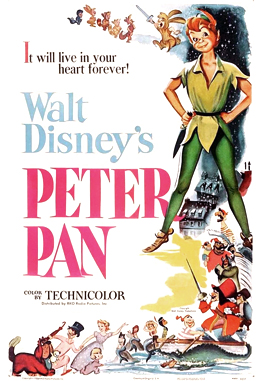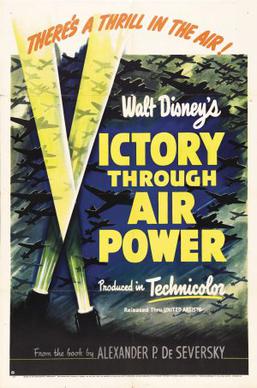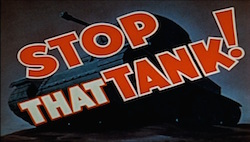
Walter Elias Disney was an American animator, film producer, voice actor, and entrepreneur. A pioneer of the American animation industry, he introduced several developments in the production of cartoons. As a film producer, he holds the record for most Academy Awards earned and nominations by an individual. He was presented with two Golden Globe Special Achievement Awards and an Emmy Award, among other honors. Several of his films are included in the National Film Registry by the Library of Congress and have also been named as some of the greatest films ever by the American Film Institute.

The golden age of American animation was a period in the history of U.S. animation that began with the popularization of sound synchronized cartoons in 1928 and gradually ended in the 1960s when theatrical animated shorts started to lose popularity to the newer medium of television. Animated media from after the golden age, especially on television, were produced on cheaper budgets and with more limited techniques between the 1960s and 1980s.

The Walt Disney Studios, located in Burbank, California, United States, serves as the corporate headquarters for The Walt Disney Company media conglomerate. The 51-acre studio lot also contains several sound stages, a backlot, and other filmmaking production facilities for Walt Disney Studios's motion picture production. The complex also houses the offices for the company's many divisions, with the exception of Pixar Animation Studios, Lucasfilm, and 20th Century Studios, which remains on its namesake lot in nearby Century City as tenants of Fox Corporation.

Walt Disney Pictures is an American film production company and subsidiary of Walt Disney Studios, a division of Disney Entertainment, which is owned by The Walt Disney Company. The studio is the flagship producer of live-action feature films within the Walt Disney Studios unit, and is based at the Walt Disney Studios in Burbank, California. Animated films produced by Walt Disney Animation Studios and Pixar Animation Studios are also released under the studio banner. Walt Disney Studios Motion Pictures distributes and markets the films produced by Walt Disney Pictures.

Peter Pan is a 1953 American animated adventure fantasy film produced in 1952 by Walt Disney Productions and released by RKO Radio Pictures. Based on J. M. Barrie's 1904 play Peter Pan, or the Boy Who Wouldn't Grow Up, the film was directed by Hamilton Luske, Clyde Geronimi, and Wilfred Jackson. Featuring the voices of Bobby Driscoll, Kathryn Beaumont, Hans Conried, Bill Thompson, Heather Angel, Paul Collins, Tommy Luske, Candy Candido, Tom Conway, Roland Dupreee and Don Barclay, the film's plot follows Wendy Darling and her two brothers, who meet the never-growing-up Peter Pan and travel with him to the island of Never Land to stay young, where they also have to face Peter's archenemy, Captain Hook.

Walt Disney Animation Studios (WDAS), sometimes shortened to Disney Animation, is an American animation studio that creates animated features and short films for The Walt Disney Company. The studio's current production logo features a scene from its first synchronized sound cartoon, Steamboat Willie (1928). Founded on October 16, 1923, by brothers Walt Disney and Roy O. Disney, it is the oldest-running animation studio in the world. It is currently organized as a division of Walt Disney Studios and is headquartered at the Roy E. Disney Animation Building at the Walt Disney Studios lot in Burbank, California. Since its foundation, the studio has produced 62 feature films, from Snow White and the Seven Dwarfs (1937) to Wish (2023), and hundreds of short films.

The New Spirit is a 1942 American animated short film produced by Walt Disney Productions and the U.S. Department of the Treasury, and released by the War Activities Committee of the Motion Pictures Industry. The cartoon, which stars Donald Duck, was the first film created as part of Walt Disney's World War II propaganda production. It was commissioned by Henry Morgenthau Jr., then Secretary of the Treasury, to encourage American citizens to pay their income tax in support of the war effort. The film was directed by Wilfred Jackson and Ben Sharpsteen, and features Clarence Nash as the voice of Donald, Fred Shields as the radio announcer, and Cliff Edwards singing the theme song.

7 Wise Dwarfs is a 1941 four-minute educational short animated film made by the Walt Disney Studios for Walt Disney Productions, for the National Film Board of Canada. The film was released theatrically on December 12, 1941, as part of a series of four films directed at the Canadian public to learn about war bonds during the Second World War. 7 Wise Dwarfs was directed by Richard Lyford and featured the voice talent of Pinto Colvig as "Doc".
Thomas Augustin Palmer was an Italian-American animator, cartoon director, and U.S. training film supervisor. He was active in the animation industry throughout the 1920s and 1930s and was best known for his animation work at Walt Disney Productions. He spent a good chunk of his later career directing training films for the United States Army.
Between 1941 and 1945, during World War II, Walt Disney was involved in the production of propaganda films for the U.S. government. The widespread familiarity of Disney's productions benefited the U.S. government in producing pro-American war propaganda in an effort to increase support for the war.

Victory Through Air Power is an American animated documentary propaganda film produced by Walt Disney Productions and released by United Artists on July 17, 1943. It is based on the 1942 book Victory Through Air Power by Alexander P. de Seversky. De Seversky appeared in the film, an unusual departure from the Disney animated feature films of the time.
World War II changed the possibilities for animation. Prior to the war, animation was mostly seen as a form of family entertainment. The attack on Pearl Harbor was a turning point in its utility. On December 8, 1941, the United States Army began working with Walt Disney at his studio, stationing Military personnel there for the duration of the war. The Army and Disney set about making various types of films for several different audiences. Most films meant for the public included some type of propaganda, while films for the troops included training and education about a given topic.

Stop That Tank! is a 22-minute 1942 instructional film created during World War II by Walt Disney Productions for the Directorate of Military Training, The Department of National Defence and the National Film Board of Canada (NFB). Its purpose, akin to "edutainment", was to instruct Canadian soldiers in the handling and care of the Boys Mk.1 Anti-tank rifle for use in combat against Nazi tanks. The film presented information in an entertaining manner as well as providing an anti-Nazi propaganda message.

The Thrifty Pig is a four-minute educational short animated film made by Walt Disney Studios for the National Film Board of Canada. A World War II propaganda film, it was released theatrically on November 19, 1941, as part of a series of four films directed at the Canadian public to learn about war bonds. The Thrifty Pig was directed by Ford Beebe. It is also a remake of the 1933 film of the same name.

All Together is a three-minute educational short animated film made by the Walt Disney Studios, for the National Film Board of Canada. The film was released theatrically on January 13, 1942 as part of a series of four films directed at the Canadian public to buy war bonds during the Second World War.

Donald's Decision is a four-minute educational short animated film made by the Walt Disney Studios, for the National Film Board of Canada. The film was released theatrically on January 11, 1942 as part of a series of four films directed at the Canadian public to buy war bonds during the Second World War.
Events in 1942 in animation.












